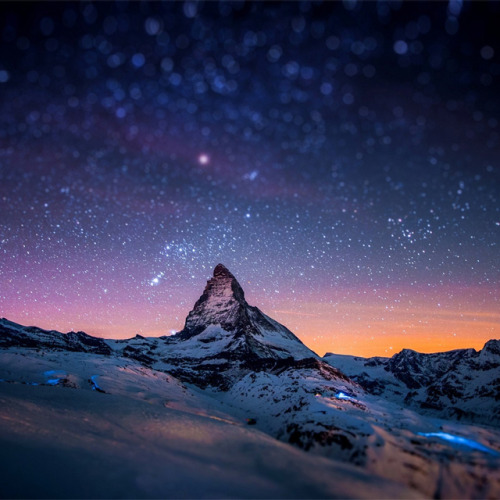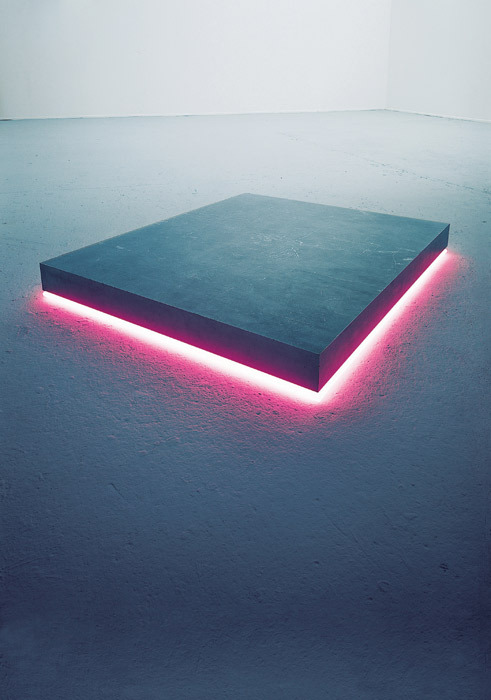One June 9th, the Mint Gallery in Atlanta, Georgia, opened Linearity, a group show featuring 25 artists working in a variety of mediums all on paper. The show was curated by artist Kelly McKernan, and is now on available to view on the web. There is some great work in this show, a few pieces were very surprising such as Nobody Lives Forever by Megan Frauenhoffer (shown first). This mixed-drawing has the same figurative style Megan is known for, but its a new style overall and looks amazing. Take a look at the preview images below, from Megan Frauenhoffer, Kelly McKernan, Kaspian Shore, and Gene Guynn, and then head over to the rest of the works.
DANGEROUS VISIONS
Tuesday, July 10, 2012
MINT GALLERY
One June 9th, the Mint Gallery in Atlanta, Georgia, opened Linearity, a group show featuring 25 artists working in a variety of mediums all on paper. The show was curated by artist Kelly McKernan, and is now on available to view on the web. There is some great work in this show, a few pieces were very surprising such as Nobody Lives Forever by Megan Frauenhoffer (shown first). This mixed-drawing has the same figurative style Megan is known for, but its a new style overall and looks amazing. Take a look at the preview images below, from Megan Frauenhoffer, Kelly McKernan, Kaspian Shore, and Gene Guynn, and then head over to the rest of the works.
CREEPSHOW 16
One of the most dire problems in the art world is the sheer lack of health service assistance that artists have access to. This is not an acceptable way for a professional artist to live. The risks they take are major; the odds are not in their favor. Artists who depend on their work for income need to find a way for their health to be supported.
Enter O+, a new festival that was started by a dentist, a doctor, and a couple of artists – all friends – in Kingston, NY (near Woodstock). Their idea is quite simple: Artists come to the festival to perform or show their art, and are ‘paid’ with health care of all kinds ranging from physical therapy, blood tests, dentistry, eye exams and the like. Covering everyone’s healthcare is no simple matter, but much success has been had with the festival thus far. It marks the beginning of a solution to the artist healthcare problem.
Past participating visual artists include: Mike Egan, Thom Grady, Jessica Harrison, Polly M. Law, Denise Orzo, Geddes Jones Paulsen, Kevin Paulsen, Anthony Pontius, Scott Holloway and many others.
Artists can apply to get their artwork into the festival, but it’s highly competitive. The best way to get involved is to volunteer and still get access to some of the health services offered. For details on volunteering, check out the site here.
Taking part in any way means spending Columbus Day weekend in October up in Kingston, NY, which is a short two-hour drive north of Manhattan with bus services leading directly into the heart of the festival. If attending is not feasible for you, spreading the word will help call attention to the festival and help it grow so that more artists can be helped. You may want to consider starting a version of the festival in your city.

O+ is only about to hit its third birthday – it’s still young and small. Because of the attention it’s gotten (TED, Wall St Journal, Huff Post, Bloomberg Business Week and others), and because its volunteers are VERY passionate about its cause, it really has the potential of reaching very far and wide.
Check out some of the street art from previous years’ festivals:
Friday, July 6, 2012
Tuesday, July 3, 2012
STOP CALLING IT "THE GOD PARTICLE" !!!!
We've heard the rumors. Tomorrow is likely to bring news that physics nerds have been waiting for: the "official" discovery of the Higgs Boson. But something is gnawing at me like children on my lawn: this whole "God Particle" business.
Don't get me wrong. Science — and physics, in particular — is filled with bad naming conventions: The big bang was neither big nor a bang; the "color" of a quark or a gluon has nothing to do with what they actually look like; even "spin"has staggeringly less to do with a gyroscope than you might have at first guessed. And while the Higgs deserves our respect, "God Particle" is just going too far.
Seriously. What's wrong with you people?
First, a bit of history. The Nobel Laureate Leon Lederman coined the phrase "The God Particle" as the title of his otherwise excellent book as a way of underscoring how essential the Higgs is in our Standard Model of Physics. You can get away with that sort of hype when you're a Nobel prize winner. It also sold roughly 10 gajillion copies. He also got cutesy afterwards, and used to semi-seriously defend the name by saying that the publisher wouldn't let him call it the goddamn particle.
Meanwhile, National Geographic went one step further, comparing it to "The Force," from Star Wars — which did at least make for an awesomely adorable graphic at our sister site Gizmodo — but really kind of misses the bigger picture.
Just to be clear, discovering the Higgs will be a huge deal. It is the last remaining particle of our Standard Model of physics, and in a lot of ways it's very different than any other particle that we've ever seen. It's the first spin-0 particle, which isfairly significant. There's also the whole "creating mass" thing that it's so famous for. We should give credit where credit is due.
But let's not go overboard. I can think of at least three good reasons that referring to the "God Particle" should be a wedgieable offense. Knowing the io9 readership, I expect dozens more in the comments section.
1) It makes us sound like those mutants in Beneath the Planet of the Apes who worshiped a nuclear bomb.
Even if discovering the Higgs answered all of the fundamental questions in physics and gave us a Theory of Everything (it doesn't), the particle itself is just a particle, like any other. It interacts with other particles, and those interactions take the form of changes in energy.
Seriously, just dial it back a bit.
There have even been contests to rename the damn thing to something a bit less grandiose. The Guardian newspaper apparently came up with, "the champagne bottle boson." To my mind, though, this is both a bit silly and very unnecessary. The Higgs already has a name: the Higgs. We don't insist on calling the electron "ol' current-carrier" (though perhaps we should).
In fact, the Higgs has LOTS of names. While Peter Higgs came up with his version of the mechanism in 1964, about half a dozen other scientists came up with similar solutions at around the same time. This is going to cause the Nobel committee a giant headache when they try to figure out who to award the Prize to. Virtually every combination of names has been used as a descriptor for the particle, so if you want to call it something else, might I suggest the "Englert-Brout-Higgs-Guralnik-Hagen-Kibble Boson"?
2) It's not the only thing that can make mass.
The Higgs mechanism was developed to address a very specific problem. It was well-known at the time that assuming what are known as "local gauge symmetries" (PROTIP: work that phrase into conversation as often as possible) would give rise almost immediately to various mediator particles. For electromagnetism, we expect 1, the photon. For the weak force, we expect 3, theW^+, W^-, and Z^0.
But there's a problem — the theory also predicts that all of these mediators should be massless, and the W and Z particles are huge. The W particles are both about 86 times the mass of a proton, and the Z boson is about 97 times as massive as the proton.
Energy and mass are equivalent to one another. Remember, E=mc^2. But this reaction holds in reverse: m=E/c^2. Pour enough energy into a system and you create mass!
The basic idea (after glossing over LOTS of details of symmetry-breaking and the like) is that there is a Higgs field out there, and the interaction between the Higgs field and the W and Z fields creates energy, and we measure this as mass.
But this isn't just true of the Higgs, but of every energy of interaction. Just to give you an idea, you are made of protons and neutron, and your protons and neutrons are made of quarks. But the whole is much more than the sum of the parts. The total mass of quarks in a proton is only about 2% the mass of the proton, itself. The rest –- virtually all of your mass -– is made up of the interaction energies between the quarks.
Put another way, even if the mass of the quarks comes from the Higgs somehow — and even if the Higgs exists, we don't know exactly how it relates to other particles besides the W's and Z — almost none of your mass comes from the Higgs.
3) There's still a hell of a lot that remains unanswered.
The biggest problem with all of this "God Particle" nonsense is that it's a rather short-sighted way of announcing to the world that the particle physics community doesn't need any more money, thanks.
Besides greed, there's the simple fact that while discovering the Higgs means that we're on the right track with this whole Standard Model, it is absolutely not the end of the story. What doesn't the Higgs tell us?
- It doesn't explain how gravity works.
- For that matter, it doesn't really tell us much about how the strong force relates to the electroweak force — the combination of electromagnetism and the weak force for which the Higgs is so useful.
- It doesn't tell us what dark matter is — roughly 23% of the energy of the universe.
- It doesn't tell us what dark energy is — another 72% of the universe.
- It doesn't tell us why the electric charge is what it is, or an electron mass is what it is, or really, much at all about a huge number of physical constant.
- It doesn't explain why we have certain symmetries in our universe and not others.
I guess what I'm saying is: more money, please.
Dave Goldberg is a Physics Professor at Drexel University. He apologizes for the interruption of your "Ask a Physicist" service, which will be restored once he completes his first draft of "The Universe in the Rearview Mirror," a new book all about symmetry that will be published by Dutton in 2013. In the meanwhile, follow him on twitter, send an email, or get caught up with his first book
BIOLOGY 1889
This gruesome 1889 biology book outlined the many ways animals will kill us
By Cyriaque Lamar
In J.W. Buel's 1889 book Sea and Land, the author laid out many delightfully quaint illustrations of the Earth's flora and fauna. Many of these pictures detailed the myriad hilarious ways the animal kingdom eats humans, with creatures like the Japanese spider crab receiving a homicidal bad rap. Here's a selection of doom and gloom. After all, you never know when you might torn asunder by the man-eating tree.
You can see more illustrations at this great Flickr set. [V
Friday, June 29, 2012
Subscribe to:
Posts (Atom)

































































